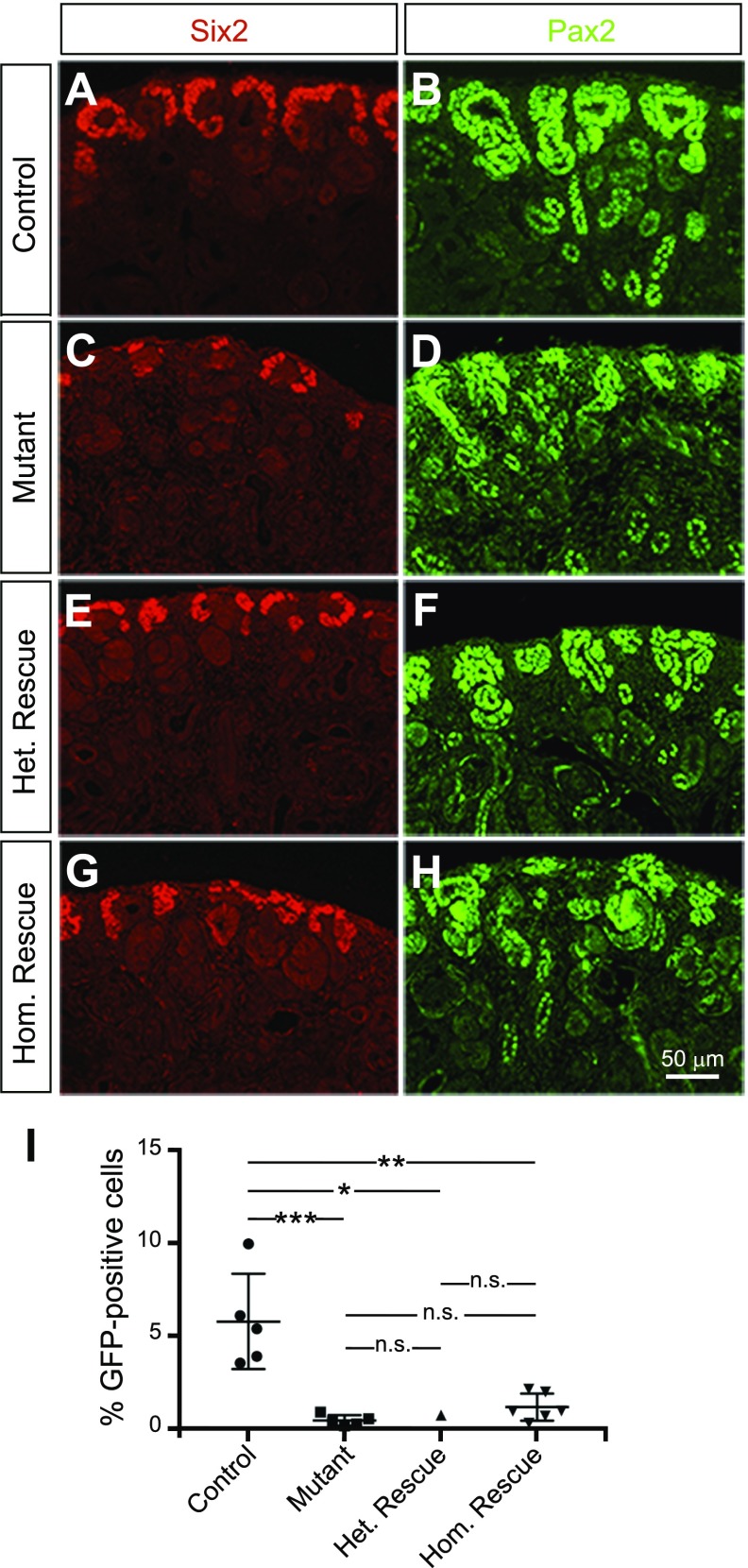Figure 3.
Decreased Bim expression in nephron progenitors of Six2-TGC Tg/+; Dicerflx/flx kidneys partially rescues depletion of nephron progenitors in mutant kidneys. A–H) Immunofluorescence was performed on control (A, B), mutant (C, D), heterozygous rescue (E, F), and homozygous rescue (G, H) P0 kidneys. Staining with Six2 (red; A, C, E, G) and Pax2 (green; B, D, F, H) revealed improved progenitor capping around the ureteric tips in heterozygous and homozygous rescue kidneys when compared to mutant kidneys. Notably, the few forming nephrons in mutant kidneys appear dysplastic. Pax2 also labels ureteric bud and collecting duct. Images shown are representative of 3 independent experiments (n = 3 embryos per genotype derived from 3 litters). Scale bar, 50 μm. I) Quantification of GFP+ cells sorted by fluorescence-activated cell sorting demonstrated a dramatic reduction in the percentage of nephron progenitors in mutant kidneys (∼0.46%) when compared to control kidneys (∼5.79%). The percentage of nephron progenitors in heterozygous rescue and homozygous rescue kidneys was ∼0.75% and 1.18%, respectively (n = 5 embryos per genotype derived from 3 litters, except for heterozygous rescue, from 1 litter). Error bars ± sem. N.s., nonsignificant. *P ≤ 0.05, **P ≤ 0.01, ***P ≤ 0.001 (1-way ANOVA with Tukey’s post hoc test).

